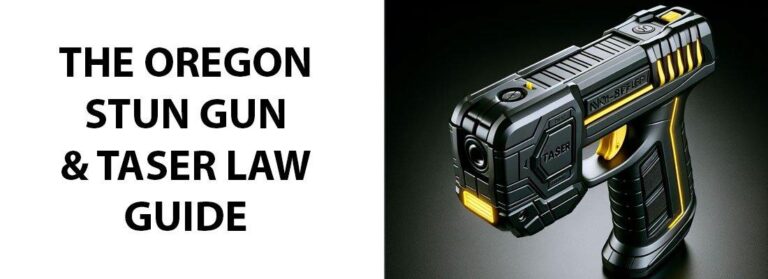Table of Contents
- Understanding Legal Age Requirements for Concealed Stun Gun Possession
- State-by-State Variations in Age Restrictions and Eligibility Criteria
- Safe and Responsible Practices for Young Concealed Stun Gun Carriers
- Expert Recommendations for Navigating Concealed Stun Gun Laws and Compliance
- Key Takeaways
Understanding Legal Age Requirements for Concealed Stun Gun Possession
When it comes to carrying a concealed stun gun, age restrictions play a crucial role in ensuring that this self-defense tool is handled responsibly. Typically, the minimum age is set by state or local laws, often ranging from 18 to 21 years. This threshold is designed to strike a balance between empowering individuals to protect themselves and preventing misuse by younger, potentially less mature, individuals. It is essential to recognize that these age requirements are not merely arbitrary numbers but reflect a combination of legal, safety, and ethical considerations.
Different jurisdictions may impose additional criteria alongside age, such as:
- Background checks to screen for criminal records
- Mandatory safety training courses
- Restrictions on where and how stun guns can be carried
State-by-State Variations in Age Restrictions and Eligibility Criteria
When it comes to concealed stun gun carry, the legal landscape is far from uniform across the United States. Each state enforces its own set of rules concerning the minimum age for possession and the specific eligibility criteria applicants must meet. For instance, while some states set the minimum age at 18, others require individuals to be at least 21 or even older. Additionally, certain states may impose strict background checks, mandatory safety courses, or residency requirements as part of the eligibility process. This patchwork of regulations means potential carriers must diligently research their state laws to ensure compliance before acquiring or carrying a concealed stun gun.
Key considerations often vary significantly, including:
- Age limits: Ranging from 18 to 21 years old depending on jurisdiction.
- Licensing requirements: Some states require permits or registrations, while others do not.
- Residency mandates: Eligibility may be restricted to residents only.
- Training and background checks: Varying demands for courses or criminal history reviews.
Understanding these nuances is critical, as ignorance of local laws can result in severe penalties. When evaluating concealed stun gun regulations, always refer to the latest official state resources or consult with a legal expert to ensure you meet every criterion effectively and safely.
Safe and Responsible Practices for Young Concealed Stun Gun Carriers
For young individuals who are legally permitted to carry a concealed stun gun, adhering to safe and responsible handling practices is crucial. It’s important to treat the device not as a toy but as a serious tool designed for self-defense. Regular training on how to properly operate and maintain the stun gun can drastically reduce the risk of accidental harm. Young carriers should always ensure their stun gun is stored securely, avoiding easy access to unauthorized users, especially younger children in the household.
Additionally, understanding the legal boundaries related to where and when the stun gun can be carried is vital. This knowledge prevents unintended legal issues and promotes responsible behavior. Young carriers should be familiar with local laws, including restrictions on schools, government buildings, and public gatherings. Practicing situational awareness and adopting nonviolent conflict resolution skills can complement the safe use of a stun gun, ensuring it is truly a last resort for protection rather than a first reaction.
- Commit to regular practice and education on stun gun usage.
- Keep the device out of reach from children and unauthorized users.
- Know and respect all applicable laws and restricted areas.
- Combine device use with strong situational awareness and communication skills.
Expert Recommendations for Navigating Concealed Stun Gun Laws and Compliance
When carrying a concealed stun gun, strict adherence to local and state laws is paramount. Experts emphasize the importance of conducting thorough research before making any decisions, as regulations can vary significantly between jurisdictions. Understanding eligibility criteria such as age limits, permit requirements, and prohibited zones is essential for lawful possession and use. It’s also advisable to keep updated with any legislative changes, as failure to comply can lead to severe legal consequences, including fines, confiscation, or even criminal charges.
To stay compliant, consider these key practices:
- Verify state-specific age restrictions-many states mandate a minimum age, often 18 or 21, to carry a stun gun.
- Secure proper permits or licenses if required; some regions may require training or background checks.
- Avoid prohibited locations such as schools, government buildings, or private properties that ban stun guns explicitly.
- Maintain documentation proving your right to carry, which can be critical during encounters with law enforcement.
By following these expert guidelines, carrying a concealed stun gun can remain a responsible and legally compliant method for personal protection.
Key Takeaways
In conclusion, understanding the age restrictions for carrying a concealed stun gun is crucial for responsible ownership and legal compliance. These laws vary by state and sometimes even by local jurisdiction, so it’s important to research the specific regulations that apply to you. Staying informed ensures that you can protect yourself effectively while respecting the boundaries set by law. As always, when considering carrying any self-defense tool, prioritize safety, training, and lawful use to make the most of your personal security measures. Stay safe and stay informed!Check Our Other Blogs
- StunGun – Your Trusted Source for Stun Guns, Laws, and Self-Defense Tips
- PepperSprayLaws – Your Trusted Resource for Pepper Spray Information
- StunGunLaws – Your Trusted Guide to Stun Gun Legality and Safety





